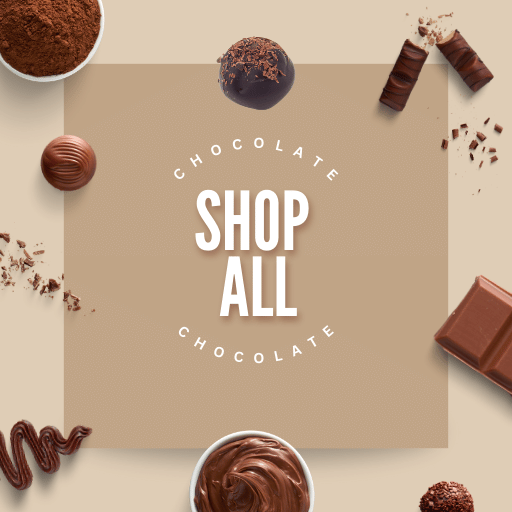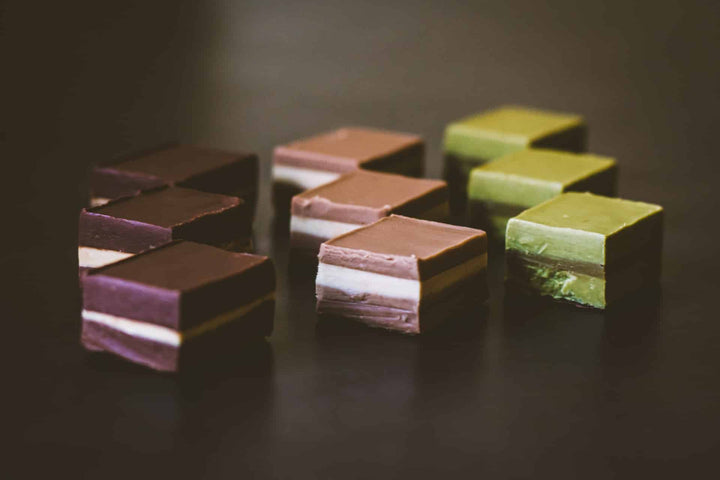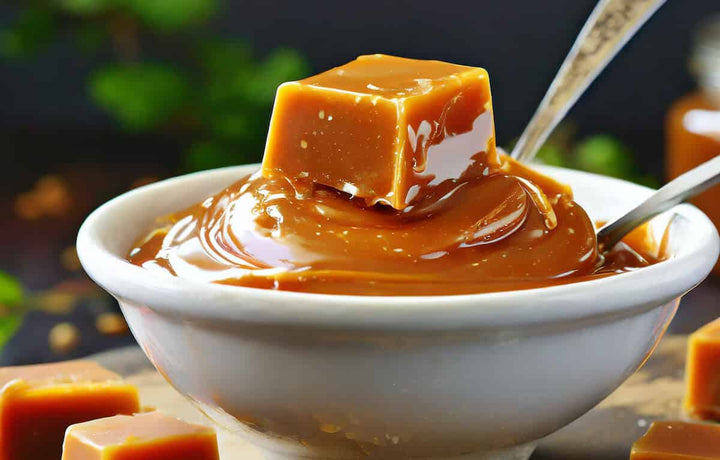Join us as we unravel the origins of fudge, tracing its evolution from a serendipitous sweet mistake to a gourmet delight cherished in households and confectionery shops alike.
Whether you're a fudge aficionado or simply curious about the roots of this popular sweet, prepare to be enthralled by the compelling tale of fudge's creation and its enduring legacy.
When Was Fudge Invented?
Fudge, a much-loved confection, traces its origins back to the late 19th century in the United States.
The exact date of its invention is somewhat nebulous, but the first documented instance of fudge is commonly believed to have occurred around the 1880s.
Fudge creation is often attributed to a happy accident in a confectionery experiment.
The story goes that a batch of caramels went awry — "fudged," in the parlance of the time — leading to the birth of this new sweet treat.
This error resulted in the soft, creamy confection we now know as fudge.
One of the earliest recorded mentions of fudge was in a letter written by Emelyn Battersby Hartridge, a student at Vassar College in Poughkeepsie, New York.
In 1886, Hartridge obtained a recipe for 30 pounds of fudge, which she made for a senior auction at the college.
This event is often cited as one of the first instances of fudge being made and sold in a collegiate setting, contributing to its spread in popularity.
By the turn of the 20th century, fudge had become widely popular in the United States and started travelling across the pond to the UK and other parts of the world.
Its simple recipe, requiring sugar, butter, and milk or cream, allowed for easy replication and adaptation, leading to the diverse flavours and varieties we enjoy today.
Thus, while the exact moment of fudge's invention remains a bit of a culinary mystery, it's clear that this delightful confection has been bringing joy to sweet tooths for well over a century.

Where Did Fudge Originate?
Fudge originated in the United States with its rich history and widespread popularity.
The precise location of its inception is a bit of a culinary enigma, but it is widely believed to have first been made in the late 19th century.
The story of fudge's creation is often linked to a batch of caramel that didn't turn out as expected.
Hence, the term 'fudge' is used in the sense of a mishap or blunder.
This happy accident created a soft, creamy confection distinct from other sweets of the time.
While the exact birthplace of fudge is somewhat unclear, its roots are firmly planted in American culinary history, from where it spread to become a global sweet sensation.
What is the History of Fudge Since Its Invention?
Since its serendipitous invention in the late 19th century, the history of fudge is a fascinating journey that mirrors broader trends in confectionery and popular culture.
Late 19th Century - Early Origins in the USA:
Fudge's story began in the United States around the 1880s.
The first documented instance of fudge being made was at Vassar College in Poughkeepsie, New York when a student named Emelyn Battersby Hartridge heard of a fudge recipe and made 30 pounds of it for a senior auction.
This college connection played a significant role in spreading its popularity among young Americans.
Early 20th Century - Spread and Popularity:
As fudge grew in popularity, it became a common feature in women's colleges across the United States.
It was relatively simple to make with basic ingredients like sugar, butter, and milk, and this ease of preparation helped it spread quickly.
By the early 20th century, fudge had become a mainstream sweet treat people of all ages enjoyed.
Around this time, fudge-making started to become a holiday tradition, particularly around Christmas.
Mid-20th Century - Commercialisation:
The mid-20th century saw the commercialisation of fudge, with confectionery brands and local sweet shops incorporating fudge into their product lines.
During this period, various flavours began to emerge, such as chocolate, vanilla, and walnut, broadening fudge’s appeal.
Late 20th Century to Present - Global Expansion and Innovation:
Fudge's popularity continued to grow globally. It became common in confectionery shops in the UK and other countries, often associated with traditional seaside resorts and tourist destinations.
The latter part of the 20th and 21st centuries saw continued innovation in fudge flavours and styles, with artisans and chefs experimenting with ingredients like sea salt, exotic fruits, and spicy elements.
Cultural Significance:
Fudge has also held a place in popular culture, often associated with homeliness, tradition, and comfort.
It's frequently featured in cookbooks and cooking shows and has a nostalgic connection for many people.
Since its invention, fudge has evolved from a college novelty to a worldwide beloved treat.
Its journey is marked by its adaptability and the affection with which it's held in public esteem, making it much more than just a sweet confectionery item; it's a part of culinary heritage.

What is the Future of Fudge?
Given its enduring popularity and versatility, the future of fudge appears quite promising.
As we look forward, several trends and developments suggest exciting possibilities for this beloved confection.
-
Flavour Innovation: The trend of flavour experimentation will likely continue, with artisan producers and enthusiasts exploring more unique and diverse combinations. Expect fudge incorporating contemporary flavours, such as matcha, salted caramel, and savoury elements, alongside traditional favourites like chocolate and vanilla.
-
Health-Conscious Variations: As consumers become increasingly health-conscious, there's likely to be a demand for fudge made with alternative sweeteners, dairy-free ingredients, and other health-focused adaptations. This could include versions suitable for vegan, gluten-free, or sugar-restricted diets.
-
Sustainable and Ethical Production: With a growing emphasis on sustainability and ethical sourcing, the fudge industry may shift towards using locally sourced, organic ingredients. Ethical production practices, including fair trade sourcing of cocoa and other raw materials, could also become more prevalent.
-
Technological Advancements: Advances in food technology might offer new methods of fudge production, packaging, and preservation, enhancing shelf life and maintaining quality while potentially introducing innovative textures and formats.
-
Global Fusion: As culinary boundaries continue to blur, fudge might see influences from various global cuisines, creating fusion flavours that blend traditional fudge elements with international ingredients and techniques.
-
E-commerce and Online Marketing: The rise of online shopping and digital marketing will likely continue to influence how fudge is sold and marketed, with more artisan producers and traditional fudge shops expanding their online presence, reaching a wider, potentially global audience.
-
Nostalgia and Tradition: Despite these innovations, fudge's nostalgic and traditional appeal is expected to remain strong. Classic recipes and time-honoured methods will continue to be cherished, with a focus on craftsmanship and quality.
In summary, the future of fudge is one of both innovation and tradition.
It's poised to adapt to changing consumer tastes and trends while retaining the classic charm that has made it a beloved sweet treat for generations.
The versatility and enduring appeal of fudge suggest that it will continue to be enjoyed by people of all ages for many years to come.
Where Can You Buy Tasty Fudge?
Whitakers fudge, celebrated for its exceptional richness and flavour, is crafted using traditional methods and real ingredients like clotted cream and butter, creating a truly indulgent and delightful treat.
Click here to see our delicious fudge...

Some Notes From an Expert Chocolatier
As an expert chocolatier, I take immense pride in continuing the tradition of making fudge using our famous original recipe.
This time-honoured approach preserves the classic, beloved taste and embodies our commitment to authenticity and quality in each batch we craft.
This dedication to traditional methods and genuine ingredients sets our fudge apart, ensuring a unique and memorable experience for every connoisseur.
Final Notes On the History of Fudge
Concluding our journey through the history of fudge, it's clear that this confection has not only stood the test of time but has also adapted and evolved, capturing the hearts and taste buds of generations.
From its accidental invention in a college dormitory in the late 19th century to its current status as a globally cherished treat, fudge has woven its way into the fabric of culinary history.
The story of fudge is one of innovation, tradition, and enduring popularity.
It has transitioned from a simple homemade delight to an artisanal masterpiece in various flavours and styles.
Its versatility and the simplicity of its core ingredients have allowed it to be reinvented repeatedly, catering to changing tastes and trends while maintaining its essential, comforting essence.
Fudge's journey is also a testament to the creativity and passion of those who make and enjoy it.
Whether served as a holiday treat, a souvenir from a seaside visit, or a crafty creation from a local confectioner, fudge holds a special place in the world of sweets.
As we look to the future, fudge's ability to adapt to new culinary trends and preferences while staying true to its roots suggests that it will remain a beloved indulgence for many more years.
The history of fudge is not just about a confection; it's a narrative of cultural evolution, sweet innovation, and the simple joy of a treat made with care and shared with love.











